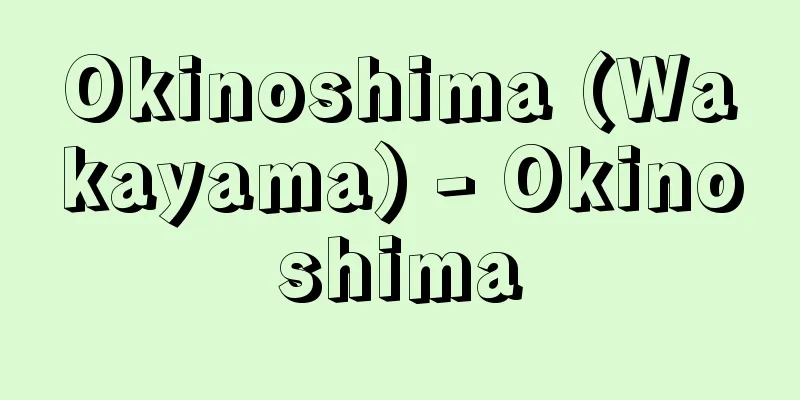Protected Birds - Hogocho

|
In general, "game birds" refer to "non-game birds," birds that are prohibited from hunting by the laws of the country. It is not a term used in the current Japanese law, "Law on Protection and Management of Wildlife and Proper Hunting." The selection of species, etc. varies from country to country. In Japan, the "Bird and Animal Hunting Regulations" issued in 1873 (Meiji 6) stipulated that all birds were subject to hunting. The "Hunting Regulations" issued in 1892 stipulated species that were prohibited from being captured, such as various cranes, various swallows, and skylarks, which gave birth to the concept of protected birds, and the term "protected birds" became more commonly used. The "Hunting Law" revised in 1918 (Taisho 7) (the "Hunting Regulations" issued in 1892 were amended to the "Hunting Law" in 1895) reversed this approach, determining that mergansers, flounders, and albatrosses were game birds, and prohibiting the capture of other species. The idea behind the "Hunting Law" is still in place today, and the current "Law for the Protection and Management of Birds and Animals and the Proper Regulation of Hunting," enacted in 2002 (Heisei 14), still protects all wild birds that inhabit Japan, and designates some as game birds and allows them to be hunted. Those who pass the test are given a hunting license, which allows them to hunt certain designated species (28 species of game birds, including spot-billed ducks and pheasants) using the designated hunting equipment, hunting methods, hunting period and location. Moreover, even game birds are prohibited from taking eggs or chicks. This is not only to protect hunting resources, but also because game birds are considered to be important members of the ecosystem for Japan's natural environment. However, in addition to the Law for Protection and Management of Birds and Beasts and the Proper Management of Hunting, the Law for Conservation of Endangered Species of Wild Fauna and Flora (Law for Conservation of Species) was enacted in 1992, and some birds are listed as species that have a small population in Japan and should be protected and conserved with priority. Some birds are also listed in the Red Data Book , which was previously compiled by the Environment Agency and has been compiled by the Ministry of the Environment since 2001. These can be considered a new concept of "protected birds." Furthermore, species covered by the Convention on International Trade in Endangered Species of Wild Fauna and Flora (CITES), the Convention on Wetlands of International Importance Especially as Waterfowl Habitats (Ramsar Convention), the Convention between the Government of Japan and the Government of the United States of America for the Protection of Migratory and Threatened Birds and Their Environments (U.S.-Japan Migratory Bird Convention), the Japan-Australia Migratory Bird Convention, and the Japan-China Migratory Bird Convention are also considered to be "protected birds." Furthermore, the "world's most endangered birds" (endangered species) announced by the International Union for Conservation of Nature (IUCN) are naturally a new concept of "protected birds" (in 1958, IUCN made a list of the "world's most endangered birds" and designated 13 species as "internationally protected birds". However, there are now as many as 300 endangered species. These could be said to be the current "world's protected birds"). [Yanagisawa Norio] [References] | | | Conservation Law | | | | | | |Source: Shogakukan Encyclopedia Nipponica About Encyclopedia Nipponica Information | Legend |
|
一般的には「狩猟鳥」に対して、その国の法律によって狩猟を禁止されている鳥「非狩猟鳥」をさしていることが多い。現在の日本の法律「鳥獣の保護及び管理並びに狩猟の適正化に関する法律」に使われていることばではない。種類の選択などはそれぞれの国により異なっている。 日本では、1873年(明治6)公布の「鳥獣猟規則」では、鳥はすべて狩猟対象であった。1892年公布の「狩猟規則」によって、ツル各種、ツバメ各種、ヒバリなど捕獲を禁ずる種を定めたことで、保護鳥の概念が生まれ、「保護鳥」という言い方が一般に使用されることが多くなった。1918年(大正7)に改正された「狩猟法」(1892年公布の「狩猟規則」が1895年に「狩猟法」と改められた)では、この考え方が逆転し、アイサ、アトリ、アホウドリなどを狩猟鳥と決め、それ以外の種の捕獲を禁止する方向となった。この「狩猟法」の考え方は現在も継承されており、2002年(平成14)に制定された現行の「鳥獣の保護及び管理並びに狩猟の適正化に関する法律」においても、日本に生息する野生の鳥はすべて保護の対象であり、一部を狩猟鳥と定め、狩猟させている。そして、試験を受けて合格した人に狩猟免許を与え、定められた猟具と猟法・期間・場所の範囲で、一部の定められた種(カルガモやキジなど28種の狩猟鳥)を狩猟できることとしている。しかも狩猟鳥であっても、その卵や雛(ひな)をとることは禁止されている。これには狩猟資源保護の意味もあるが、日本の自然にとっては狩猟鳥であってもたいせつな生態系の構成員とみているからである。 しかし、現在では「鳥獣の保護及び管理並びに狩猟の適正化に関する法律」以外に「絶滅のおそれのある野生動植物の種の保存に関する法律」(種の保存法)が1992年(平成4)に制定され、日本としては個体数も少なく、重点的に保護・保全を考えていかなくてはいけない種として、リスト・アップされている鳥がいる。また、かつては環境庁によって、そして2001年以降は環境省によって編纂(へんさん)されている日本の『Red Data Book』(レッド・データ・ブック)に記載されている鳥もいる。これらは、新しい概念の「保護鳥」といえる。さらに「絶滅のおそれのある野生動植物の種の国際取引に関する条約」(ワシントン条約)や「特に水鳥の生息地として国際的に重要な湿地に関する条約」(ラムサール条約)「渡り鳥及び絶滅のおそれのある鳥類並びにその環境の保護に関する日本国政府とアメリカ合衆国政府との間の条約」(日米渡り鳥条約)「日豪渡り鳥条約」「日中渡り鳥条約」、などの対象種も「保護鳥」であろう。 また、国際自然保護連合(IUCN)が発表している「世界で絶滅のおそれのある鳥」(絶滅危惧種)なども当然新しい概念の「保護鳥」である(1958年に、IUCNが発表した「世界で絶滅のおそれのある鳥」をリスト・アップして13種を「国際保護鳥」とした。しかし、いまでは絶滅危惧種は300種にも及ぶ。これらが現在の「世界の保護鳥」といえるだろう)。 [柳澤紀夫] [参照項目] | | | | | | | | | |出典 小学館 日本大百科全書(ニッポニカ)日本大百科全書(ニッポニカ)について 情報 | 凡例 |
<<: Secret Imperial Edict of Bogo
>>: Vocoder - Vocoder (English spelling)
Recommend
Folk dance - minzokubuyou
A general term for dances based on ethnic groups ...
Castling
…It usually becomes the most powerful queen. (2)C...
Amyot, Jacques
Born: October 30, 1513, Melun Died: February 6, 15...
Morgan, J(ohn) P(ierpont)
Born April 17, 1837 in Hartford, Connecticut, USA....
Edmund Halley
British astronomer. Identifier of Comet Harry. Bo...
Bazooka (English spelling)
An anti-tank rocket launcher developed and deploye...
Cassito
The name of an ethnic group from the Ancient Orien...
Obscure - Obscure
This refers to the avoidance of obvious expression...
Sagamihara [city] - Sagamihara
The city is located in the central-northern part o...
Toyokawa [city] - Toyokawa
A city in the southeastern part of Aichi Prefectur...
Hepatolenticular degeneration - Hepatolenticular degeneration
Please see the "Wilson's Disease" p...
Prayer Festival - Kigansai
…This period corresponds to Lent, so spring grain...
Altdorfer, E.
…He was also an accomplished artist in prints, wa...
Aragonite
Also called aragonite. Its chemical composition is...
Doppler effect
When a train passes in front of an observer stand...









